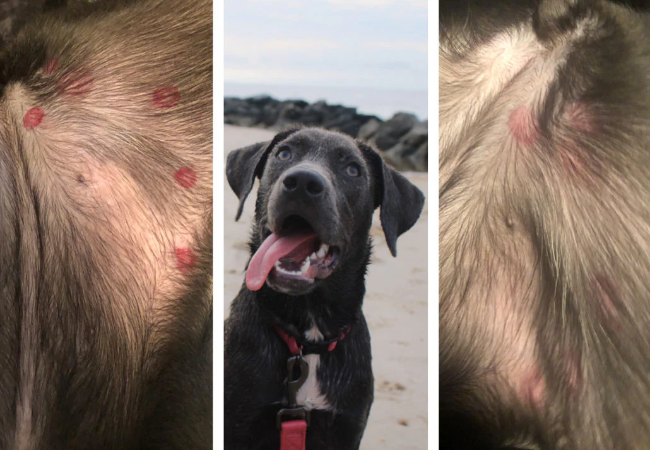Veterinary Guide: Flea Bite Hypersensitivity in Dogs 2025 🐶🩺

In this article
Veterinary Guide: Flea Bite Hypersensitivity in Dogs 2025 🐶🩺
By Dr. Duncan Houston BVSc
Flea bite hypersensitivity (aka flea allergy dermatitis, FAD) is a common skin allergy resulting from a heightened immune response to proteins in flea saliva—sometimes triggered by just one bite.
📍 Causes & Risk
- Immune-mediated, most common in dogs under 5 years old.
- Only tiny flea exposure is needed—even one bite can trigger intense symptoms that persist for up to 2 weeks.
- Often, no fleas are visible—even diligent grooming doesn’t rule out FAD.
⚠️ Clinical Signs
- Severe itching, biting, licking—especially on rump, tail base, inner thighs, neck, and head.
- Hair loss, redness, papules, pustules, crusts, scabs, and hot spots—common secondary bacterial infections.
- May present as anemia and lethargy if the flea burden is heavy.
🔬 Diagnosis
- History, skin exam, and characteristic lesion distribution.
- Flea combing may reveal flea dirt (dark specks that leave rusty streaks when moistened).
- Skin cytology, scrape, or culture assesses secondary infections.
- Diagnosis is often confirmed by response to treatment.
💊 Treatment & Management
- Rapid-kill flea prevention: Essential to stop saliva delivery—options include topicals, collars (e.g., Vectra 3D), chews, or injectables.
- Environmental control: Treat all pets, wash bedding in hot water, vacuum weekly, and consider yard sprays.
- Itch relief: Short-course steroids (prednisone 0.5–1 mg/kg), or alternatives like Apoquel, Cytopoint; antihistamines and omega‑3s help.
- Infection control: Antibiotics for pyoderma; topical antimicrobials as needed.
- Desensitization therapy: Rarely used; allergy shots with flea antigen have limited success.
📈 Prognosis & Monitoring
- With strict year-round flea control, most dogs show significant improvement within days.
- Recurring flares are possible, especially if control lapses.
- Close follow-up is vital to prevent chronic infections and skin damage.
✅ Dr Houston’s Clinical Tips
- 🕵️♂️ Always treat the environment and pets simultaneously—fleas can hide in carpets and upholstery.
- 🚀 Use fast-acting flea preventatives—Vectra 3D repels and kills early, reducing bite risk.
- 📋 Limit steroid dose/time; switch early to Apoquel or Cytopoint in chronic cases.
- 🔍 Regularly comb and monitor for flea dirt, even if no fleas are seen.
- 📅 Maintain year-round prevention—fleas thrive in many climates year-round.
If your dog has relentless itching, red spots, scabs around the rear or neck—even with no visible fleas—seek veterinary care. With a proactive, multi-angle treatment plan and diligent prevention, we can get your pet relief, protect their skin, and prevent future flares. 🐾❤️






